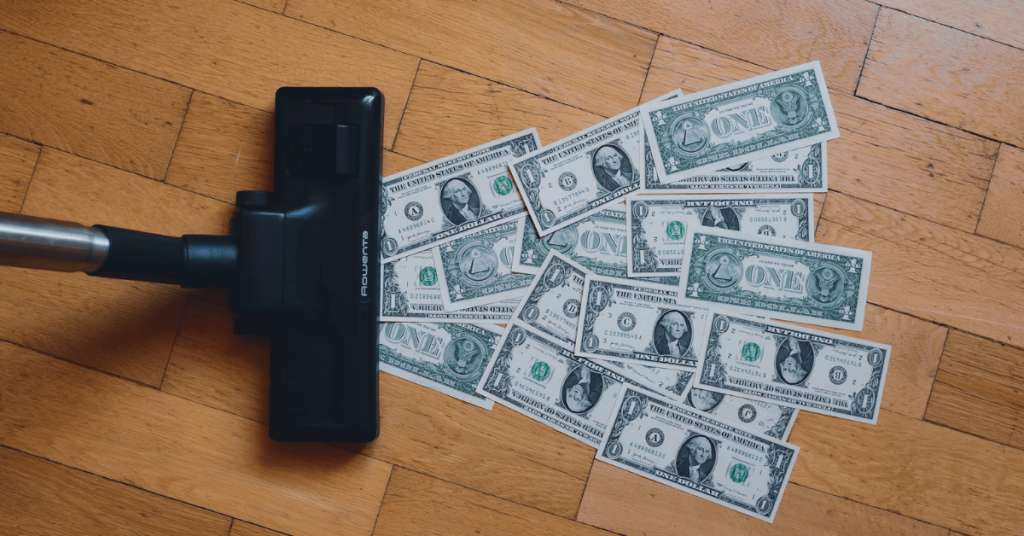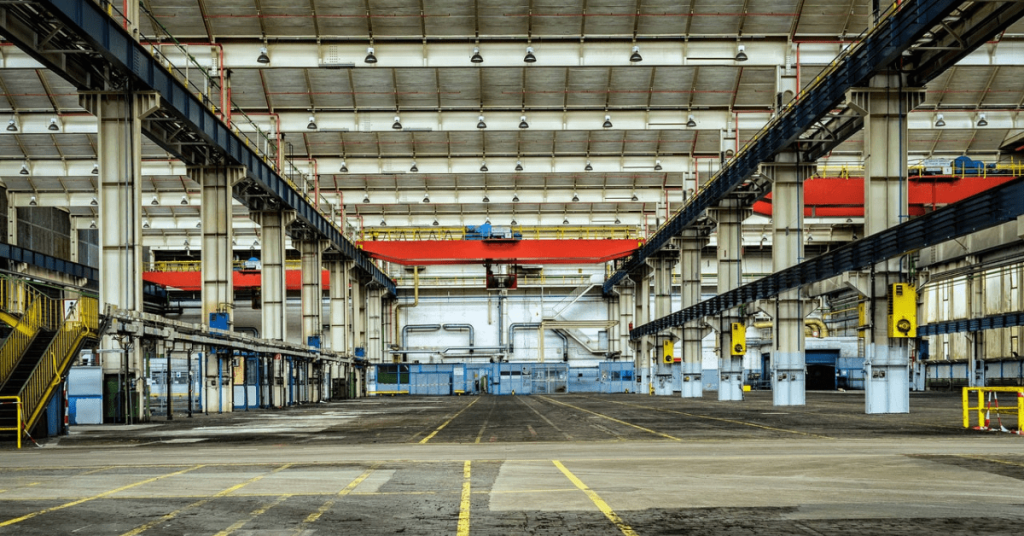
Noticed anything lately at the gas pump? Or how about:
… at the grocery store?
… when you got your latest home energy bill?
… maybe if you were in the market for a car or house?
Everything is way more expensive than it used to be! And that’s not just an observation from me.
Recently, the U.S. Bureau of Labor and Statistics reported that the consumer price index (i.e., the metric we use to measure inflation) has increased by a whopping 6.2 percent for all goods between October 2021 and 2020. That’s a figure that’s way above the nice, neat 2 percent target that the Federal Reserve hopes to keep inflation controlled at each year.
With everything that happened in 2020, is this really all that surprising? Not exactly …
But all the same, I’d like to use this post to explore some of the reasons why inflation is so high. And more importantly, I’d like to offer three suggestions for what you can do about it.
This post may contain affiliate links. If you purchase a product or service from an affiliate link, we may receive a small commission. This supports our website and there is no additional charge to you. Thank you!
Why is Inflation So High Right Now?

Since COVID first started, lawmakers have enacted six major bills. In total, that’s infused about $5.3 trillion into the economy that didn’t previously exist.
It was a nice shot in the arm, and the 2020 recession certainly could have been much worse without it. However, you have to remember that you can’t just pump that much money into the system and not expect there to be consequences.
Here are a few examples of the effects it had:
1. Unbalanced Demand
While industries like travel were severely hurt by the pandemic, others such as technology and contractors flourished. On both sides, costs had to be raised – either to make up for losses or to take advantage of the rising tide of demand.
2. Materials Shortages
Even though the demand was there for some industries, the pandemic forced the production of many things to go on hold. This has had severe ripple effects throughout all areas of the economy.
Take the computer chip shortage for example. Have you tried recently to buy a new car? Washing machine? Playstation 5? The chip shortage has slowed down the production of these products.
And when there’s scarcity, prices will increase.
3. Rising Energy Costs
It’s not just you feeling the burn with more expensive gas or electric bills. Companies that rely on transportation to deliver their goods are also getting hit with higher fuel costs.
And yes, those higher charges are being passed on to you. Even if it says “free shipping”, make no mistake – it’s not really free. You’re being charged one way or another.
4. Supply Chain Congestion
Even if goods did get made and shipped, there’s a huge problem with them not getting to where they need to go. Goldman Sachs estimates there’s as much as $24 billion in goods sitting outside two ports outside of Los Angeles. And that’s just two ports of however many there are around the world!
Again, less product = more scarcity = higher prices.
5. Labor shortage
Finally, throughout the whole process, there’s been a lack of people due to COVID scares, layoffs, deliberate quitting, etc. This includes everyone from the people who build and ship the products to those who sell them.
In response, many companies have raised pay rates or even advertised sign-on bonuses to attract good help. Target and Walmart are even offering to pay for employees’ college! You can bet that the end result of all of this will be higher prices for consumers.
What You Can Do About Inflation

If all of this is the economic aftermath of the pandemic and the cost of everything is doomed to rise, then it all seems pretty hopeless, right?
… Wrong! True, you can’t go to the gas station and demand that the price of fuel be lowered. But you are human, and humans have an amazing ability to do this one thing: adapt.
Here are three ways I would recommend staying resilient through this recent surge of inflation.
1. Increase Your Income
The labor shortage may mean that you have to wait longer than usual to get your lunch at Chipotle. But on a grander scale, it also can be viewed as an opportunity.
Companies are desperately trying to hang on to good employees or fill the vacancies of those who left. If you’ve ever wanted to jump ship, now might be the time to do so. Or, if you’re happy with your current employer, then perhaps you could look internally to see if they have any open positions that would pay more.
Outside of your main job, there are also thousands of different side hustles you could take up. For instance, consider:
- Working flexible jobs like grocery shopping (Shipt, Instacart), delivering food (Grubhub, Uber Eats), or becoming a rideshare driver (Uber, Lift)
- Putting your creative skills to work as a freelance writer, graphic designer, photographer, video editor, etc.
- If you have business or professional skills, you could put those to use too. Lots of individuals need assistance writing a resume, cover letter, drafting marketing emails, managing social media, etc.
Who knows? If you get really good at one of these services and build up a list of clients, you may be able to turn it into a full-scale business one day.
2. Reduce Expenses
When times are tough, it can be an excellent time to take a step back and really take a hard look at the things you buy. Where are you spending too much and what can be cut from your budget?
… Do you even have a budget? If not, then that’s the first place I’d start. Creating a budget will give you far better control over your finances and help keep your spending habits in check.
If you need help on creating a budget, then read How to Create a Budget You Can Easily Follow.
Additionally, you could try the following:
- Stop buying name brands and go for comparable generic products instead
- Use more coupons and online promo codes
- Buy used instead of brand new
- Calling around until you get a better deal
- Swapping services with friends / family (for example, they watch your kids and you watch theirs)
At the same time, avoid debt like the plague. Don’t let yourself slip into putting expenses on a credit card and then only paying the minimum balance. That will mean paying double-digit interest on top of already more expensive goods.
Do the right thing. Stick to a budget and stay within your means.
3. Invest in Bitcoin
Okay … you might be shocked by this suggestion. But please, hear me out!
Investing is the only way to make your money earn above the rate of inflation. If you’ve got money in a bank account earning 0.01% interest, then you’re actually losing purchasing power due to inflation!
We’re at a unique time in history with Bitcoin. Even though it’s gone up more than anyone could have imagined over the past decade, I believe there’s still a huge opportunity to capitalize on what it will do next.
Notice I said Bitcoin specifically and NOT any other cryptocurrency. This is because of two reasons:
- Stock-to-flow ratio. This is a ratio of the number of units in existence divided by the number of units mined annually. To some degree, this metric can be used to roughly predict Bitcoin’s price over time. Remember that only 21 million Bitcoin will ever be mined and this rate gets cut in half about every four years. Therefore, as you can see by this graph, its price could climb quite substantially over the next 5 years!
- Adoption by large institutions. Bitcoin isn’t just for computer sleuths anymore. Large publicly -traded companies like Tesla, MicroStrategy, and Square all have Bitcoin on their books. Not only are large institutions using it as an investment product, but they also are beginning to treat it as a potential hedge against rising inflation (much like how gold has been used for the past 100 years).
Of course, I wouldn’t mortgage the house and put it all into Bitcoin. Bitcoin’s price recently fell by about 40 percent between the end of November and the beginning of December. Until it becomes a more stable asset, I’d recommend a more conservative approach and keep Bitcoin investments to no more than 5 percent of your overall portfolio.
It’s All in How You Handle It
Rising inflation can be scary. But fear can be a good thing if you use it to your advantage. Not wanting to fail is something that can motivate you to stand up, take action, and make a difference in your life.
Whether it’s inflation, a recession, or even a worldwide pandemic, we’ve been through this before. You can’t prevent these challenges from happening. But you can be prepared by putting together a plan, building up your defenses, and being protected whenever the next big thing happens.
Think about how your plan could benefit from the tips I shared like increasing your income, reducing your expenses, and investing in Bitcoin. And above all, remember to breathe. It’s the calmest minds that make it through the worst storms.
Reader: How do you plan to prepare for further increases in costs?
Leave a comment, I’d love to hear from you!
LEARN all that you can, BELIEVE in yourself, and take actions that allow you to GROW!
Get your FREE copy of the 5 Keys To Success Guide (click here).




